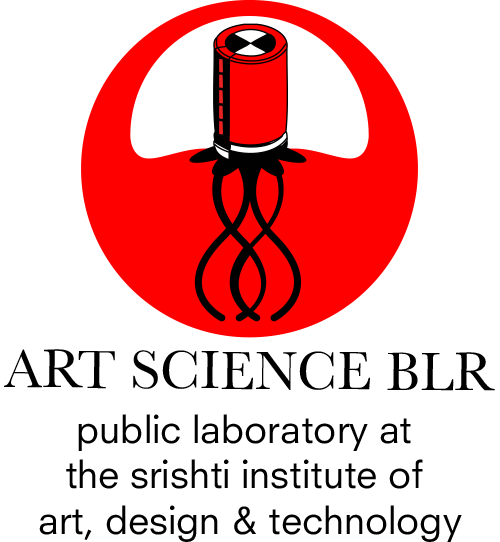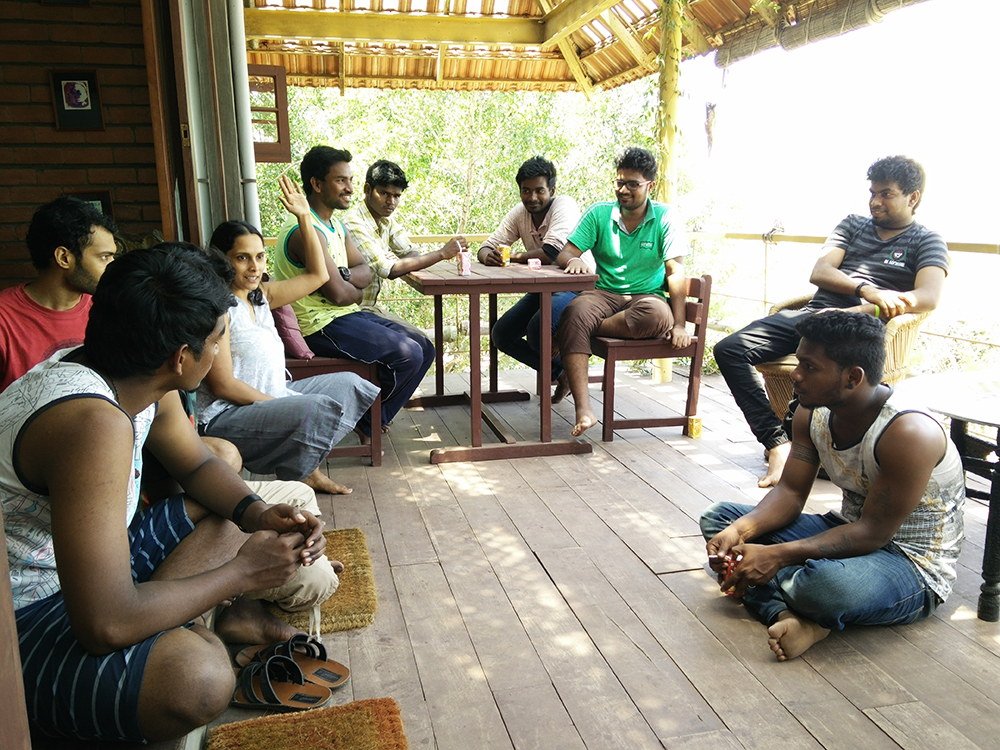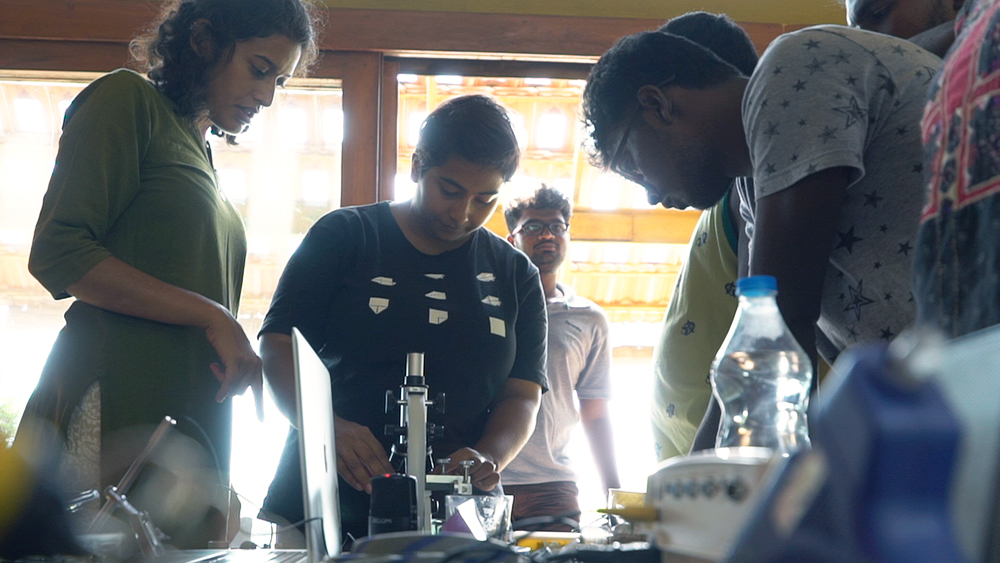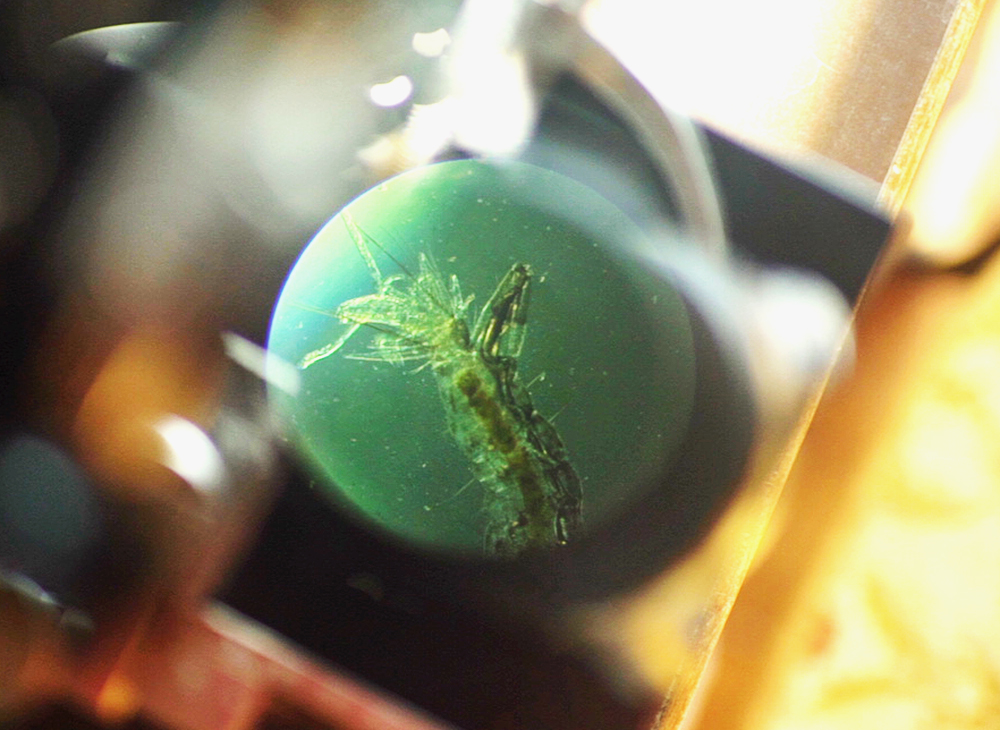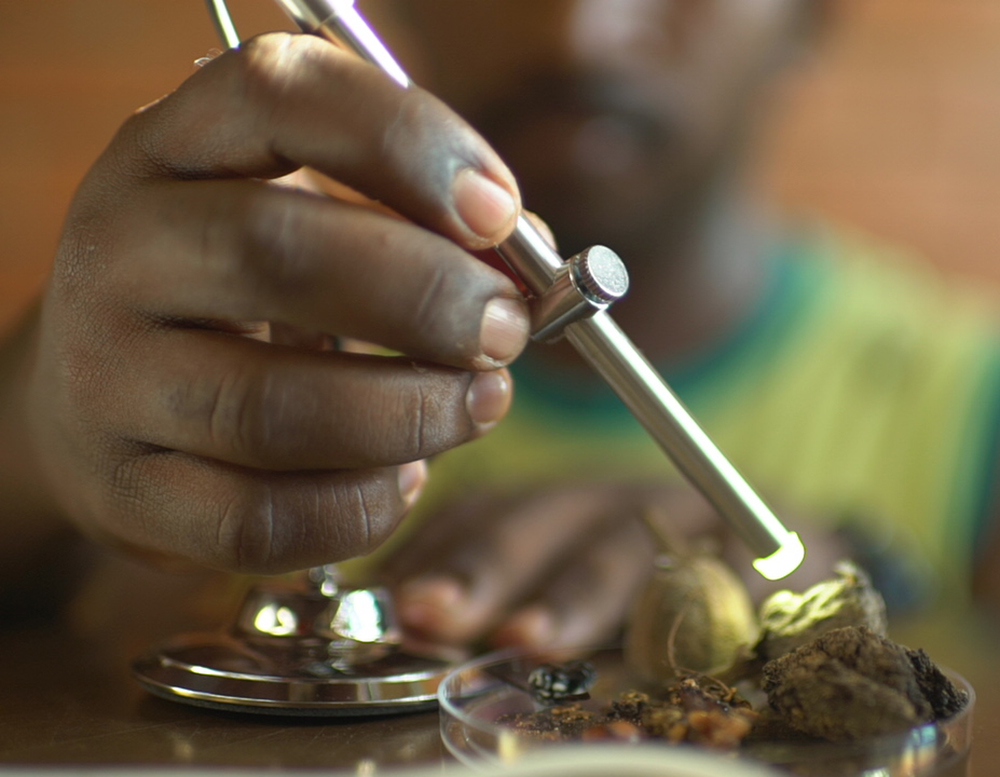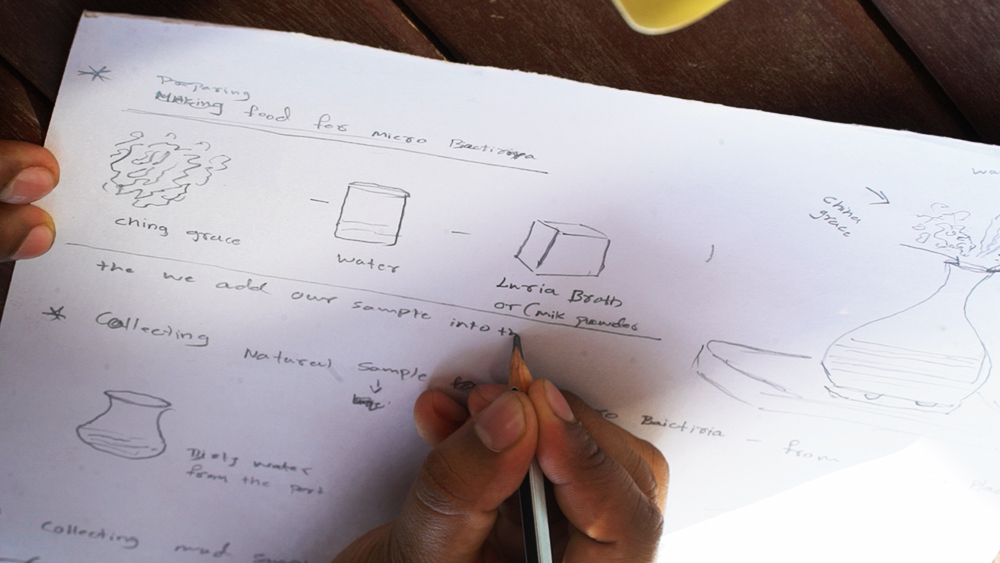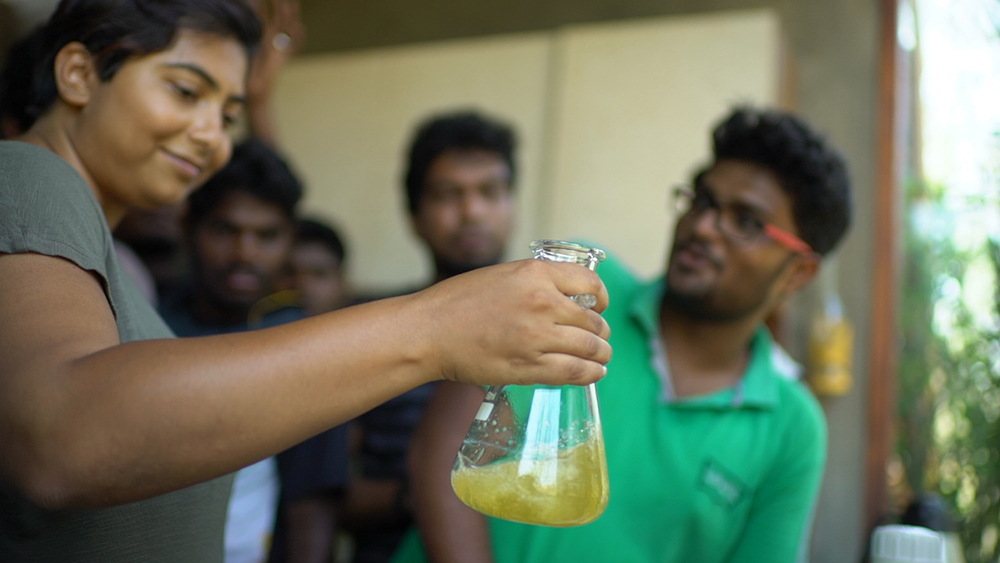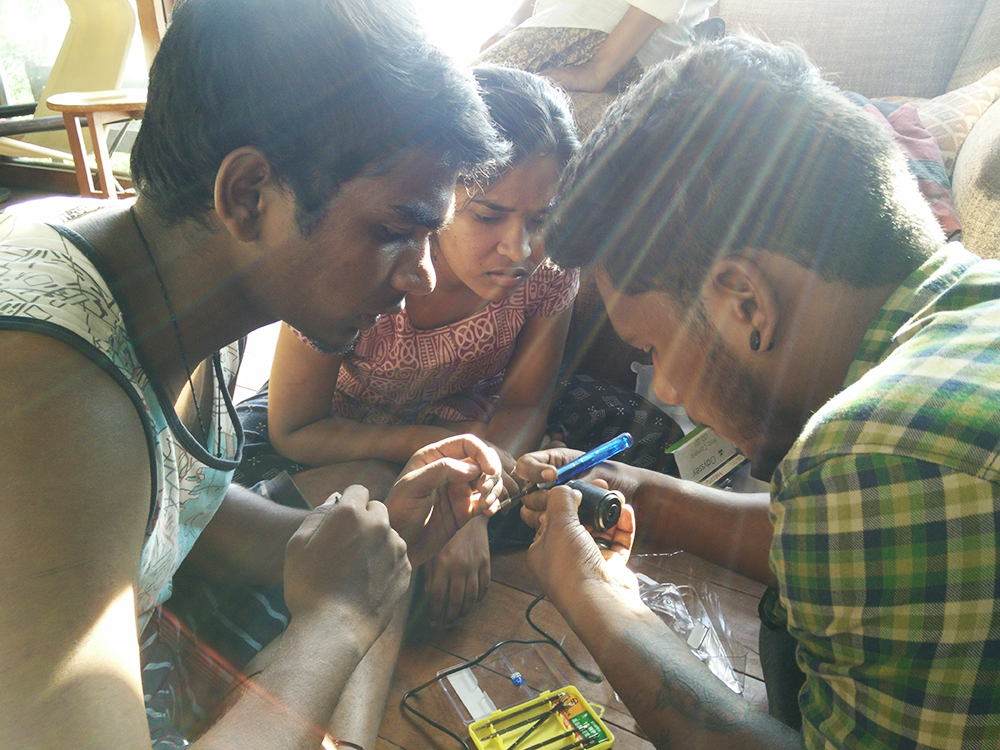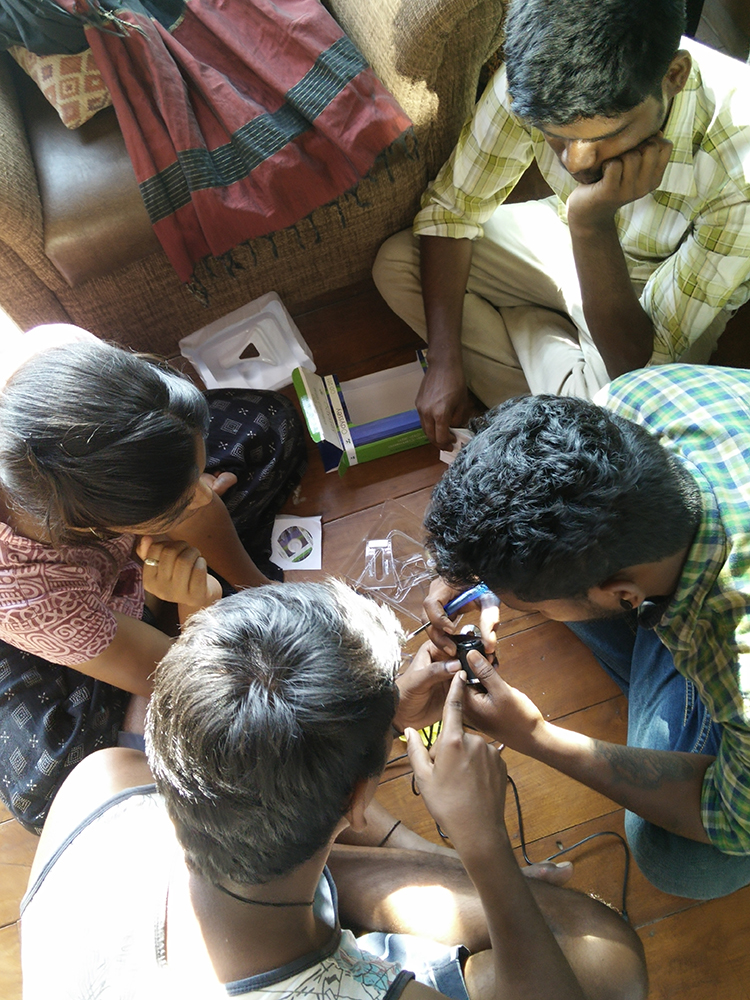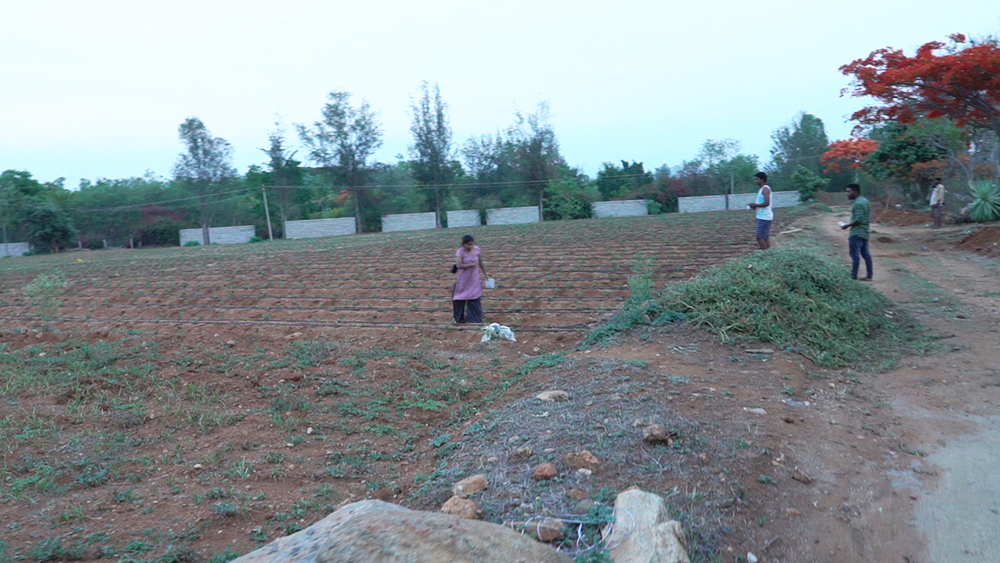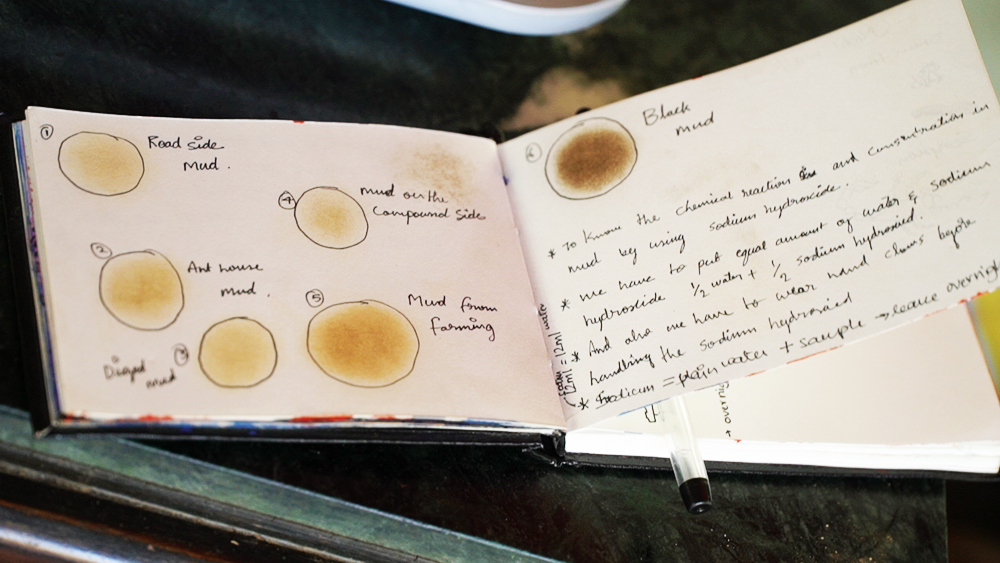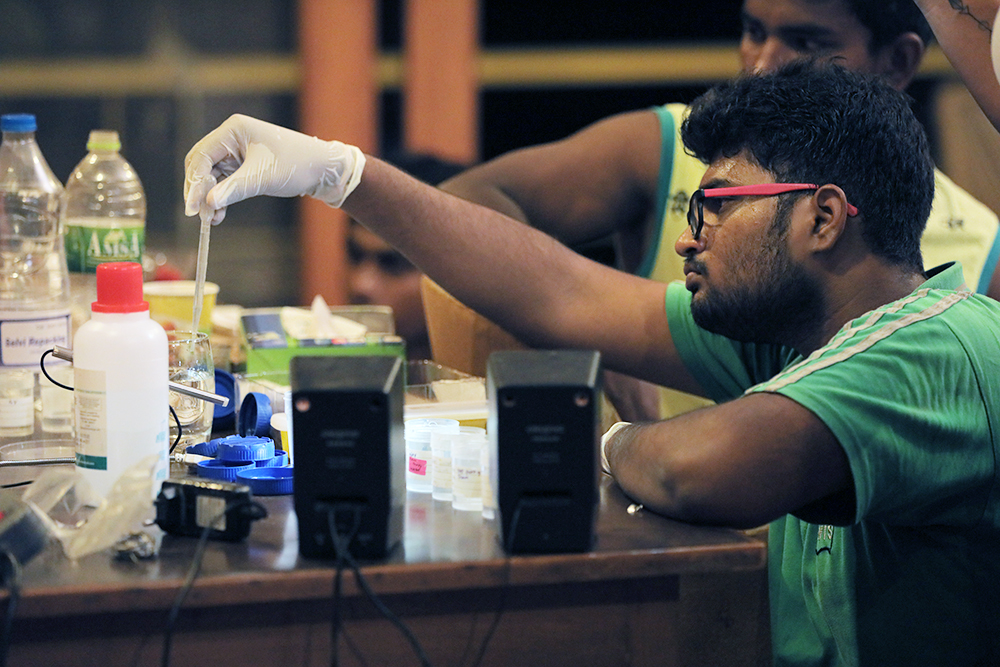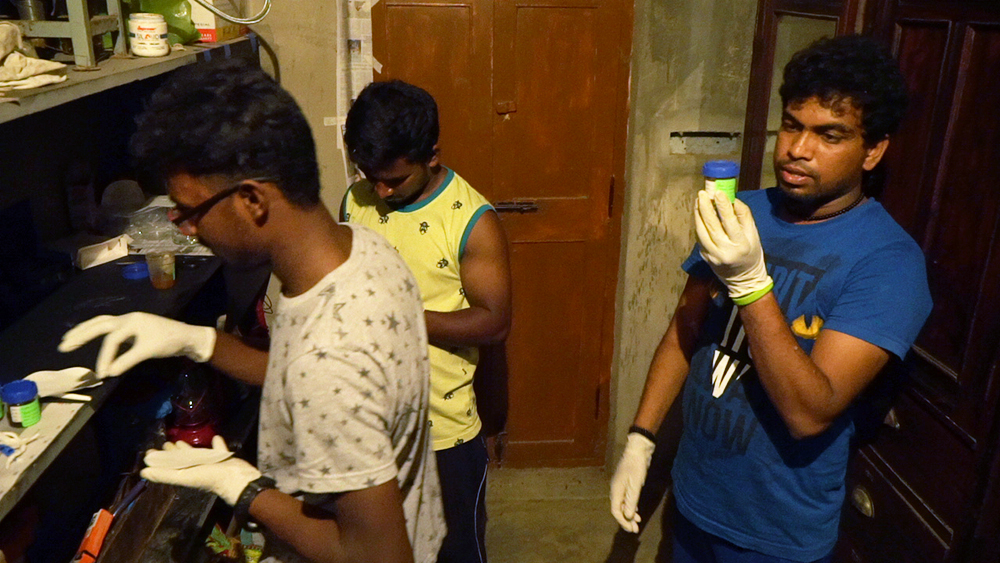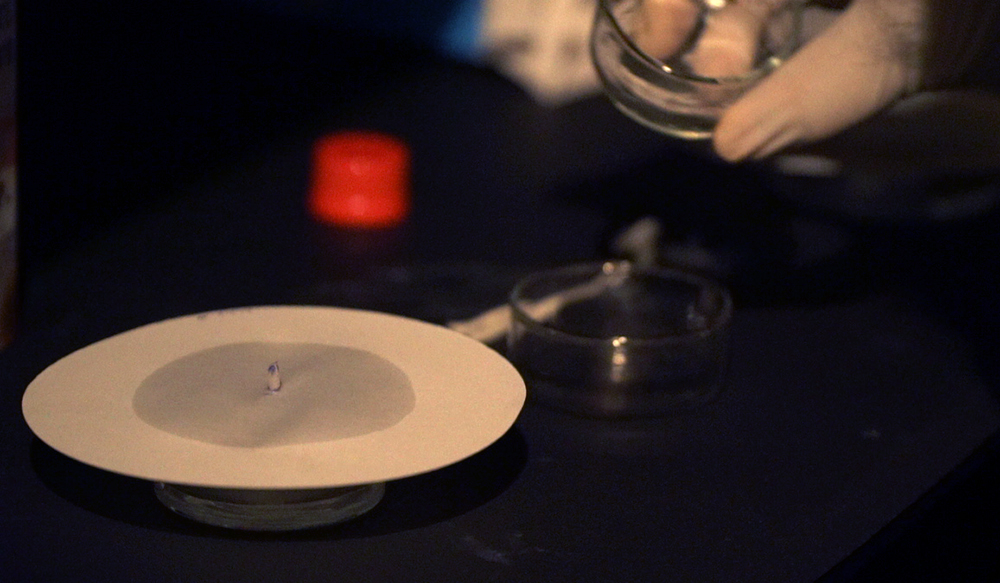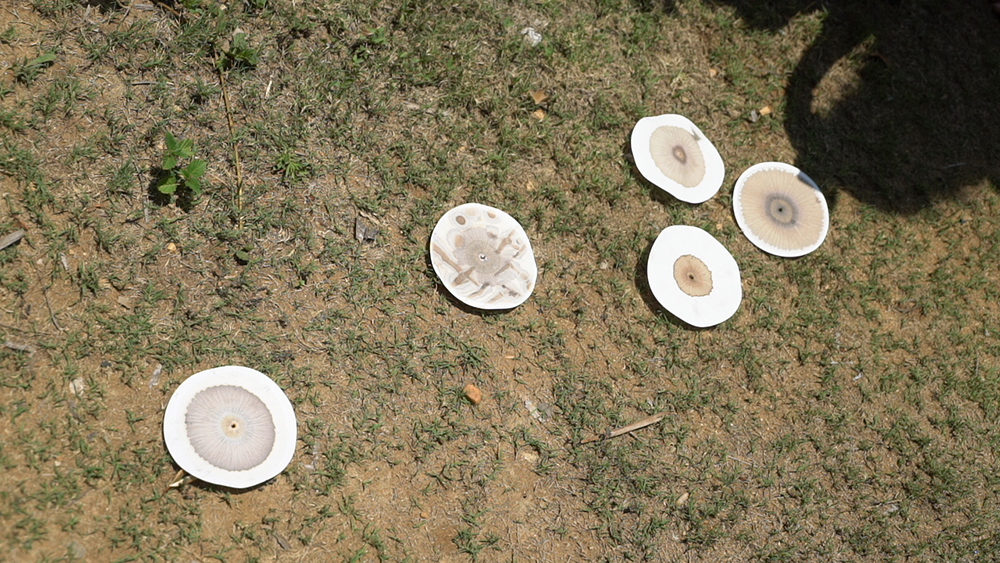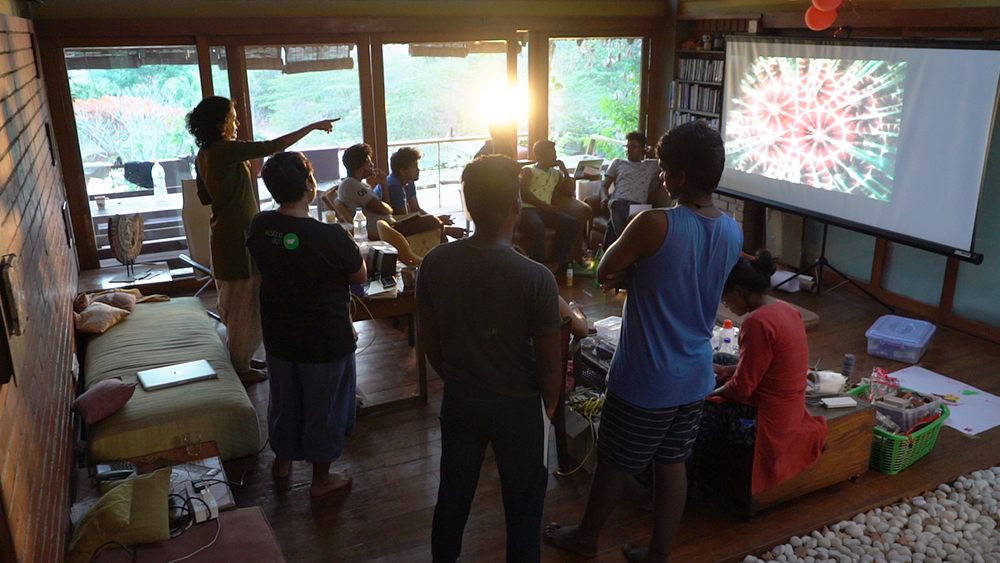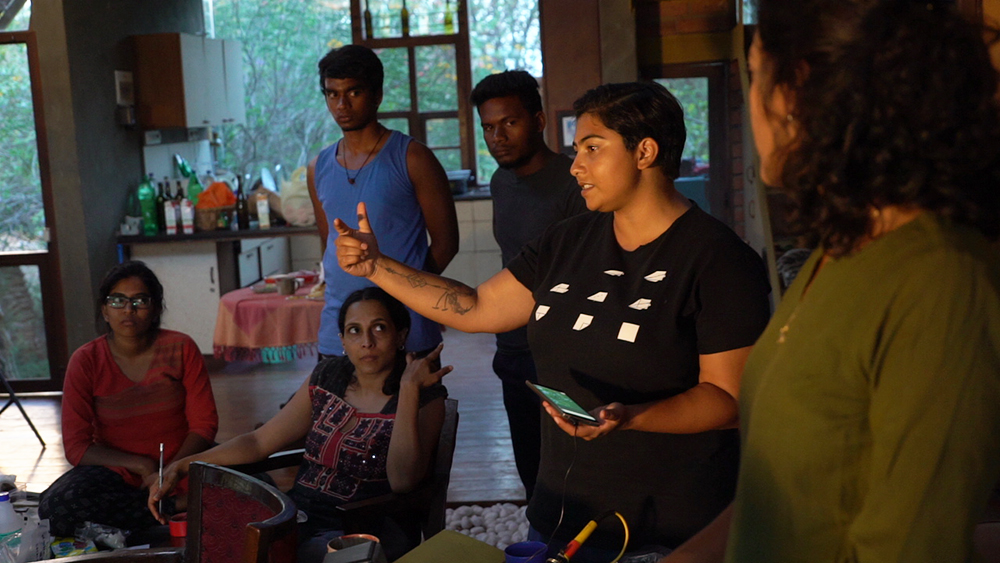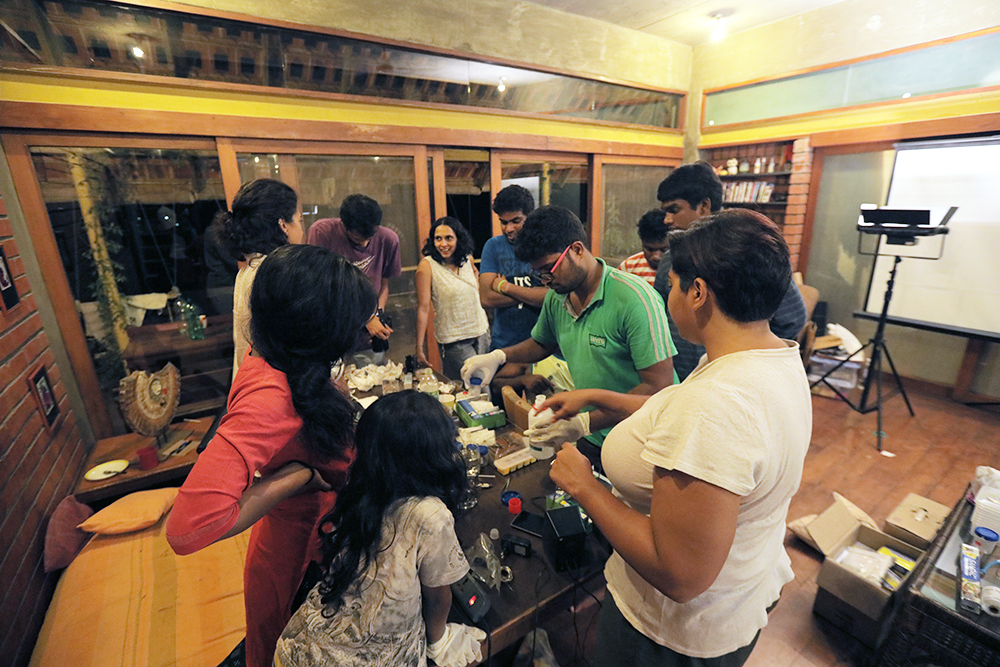
In May 2017, (Art)ScienceBLR with Tasneem Khan of Earth CoLab conducted a 2-day workshop with the placeARTS collective which is led by Arzu Mistry.
The intention of the placeARTS collective is to seed the tools of Art and Design into the hands of youth and support them in being the agents of change in their communities. placeARTS is about developing art practices that are place-based, drawing inspiration from the land, and communities that inhabit places and being responsive to the same. The youth that forms this collective are between the age of 13 – 25 and come from the Baiyapanahalli, Wahab Gardens, MRS Palaya, Vayalikaval, LBS Nagar, Hosekerehalli, Amar Jyoti and Sudham Nagar communities in Bangalore. (http://www.placearts.org/)
The workshop took place at the Mistry farmhouse in Hosur. Over the two days, we explored different methods that could be used as tools of inquiry for exploring different spaces.
We started the workshop with an introduction session which was followed by a sampling exercise where the participants walked around the farm and collected a sample of soil/water/plants/insects that they found interesting.
We looked at the samples under different microscopes that we had setup. We also spoke about how to select a microscope based on what we were looking at and what level of magnification was needed.
In our kitchen microbiology lab, we made agar plates to look at the microbial diversity in the samples that were collected. We used Luria Broth (LB) +Agar (commercially available as chinagrass in supermarkets) to make our plates. We also explored how LB can be replaced by commonly available potatoes, milk powder, jaggery etc.
The warm LB Agar solution was poured into Petri dishes. After it solidified and set, the participants left their samples to culture overnight.
We then built the hackteria microscope from webcams. For making the stage for the microscope, the participants were asked to scavenge around the farm and find materials to build it.
After building the microscope, the participants were asked to come up with a method of soil sampling for the farm, using which we could cover all of the features and soil types present there. The participants started from a single point on the farm. The nine of them each faced in a different direction and started walking along a transect. They each collected 5 samples from their transect.
Goutams reflection of the process.
These samples were then used to make soil chromatographs. Soil chromatography is a method used to visualise the diversity in the constituents of soil by separating them using capillary action. We used the method described by the Biodynamics Association of India. To study the organic matter in the soil, we used Sodium Hydroxide as a solvent. The participants mixed approx. 15 grams of their soil samples with 12ml of N/1 Sodium Hydroxide solution with 12ml of distilled water. This mixture was left to stand overnight in jars.
The next day, we built our darkroom for working with the silver nitrate. We used N/10 concentration of silver nitrate. The solution was diffused on the No1 filter paper using wicks.
After the diffusion was over, the filter paper was dried. We then diffused the sodium hydroxide + soil sample solution on the filter paper with silver nitrate using a wick. After the diffusion was complete, filter papers were exposed to direct sunlight.
Devikas reflection of the process.
We collected all the chromatographs and had a closing session with the participants where everyone discussed the workshop, how they would like to take it forward in their communities and what next they would like to work on with us.
Tasneem and Shreyasi also shared their work and some of the projects done at Earth CoLab and (Art)ScienceBLR.
At night, we went on a UV light walk around the farm to find instances of naturally occurring fluorescence. We found some glowing lichen and scorpions.
Participants of the workshop were-
Devika
Akbar
Goutam
Yelumalai
Santosh
Selvaraj
Krishna
Santosh
Vijayan
Vijaykumar
Images used are by Siddhanth Shetty, Manush John and Shreyasi Kar
